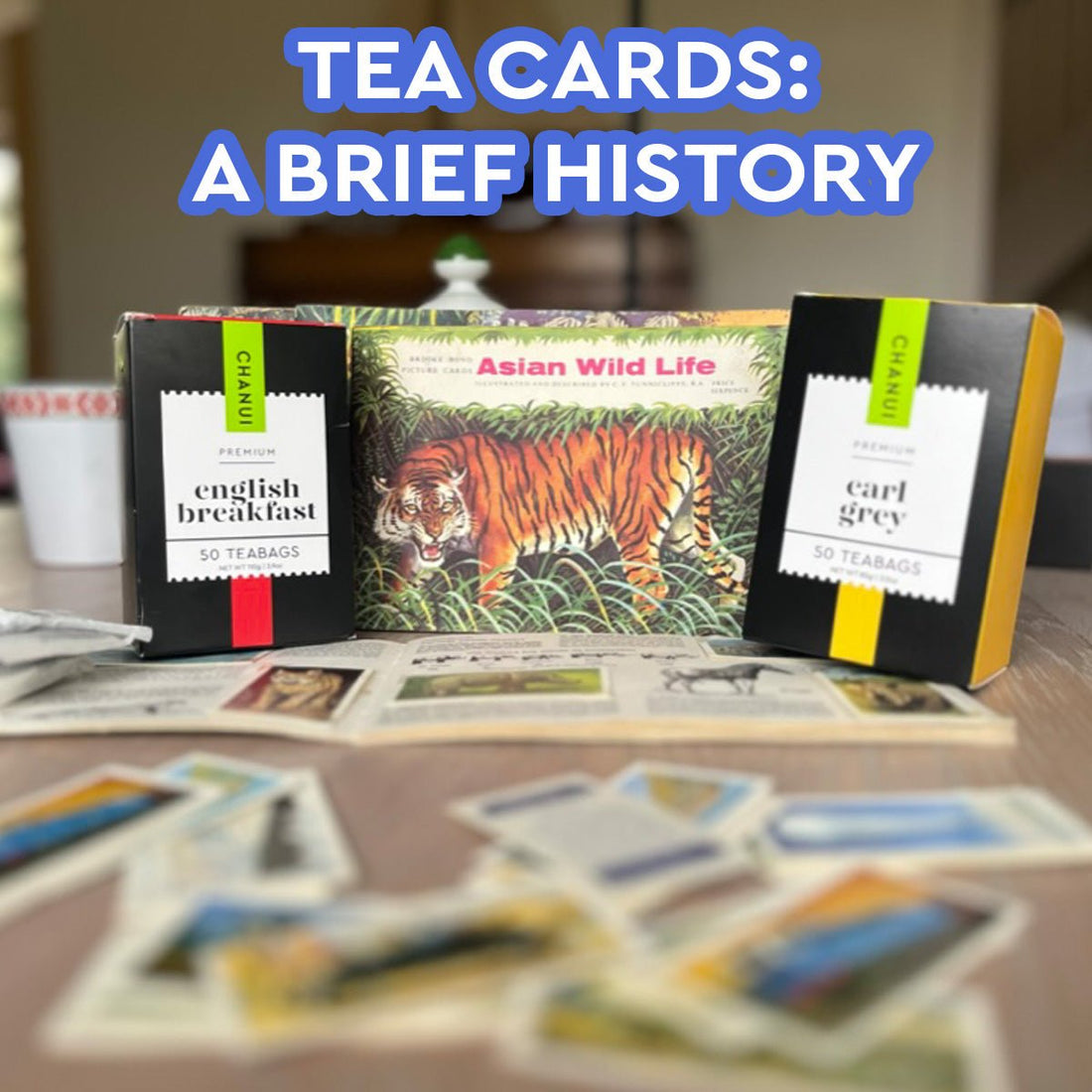Author - Martin Perkins
Introduction
After chancing upon some collections of tea cards from a car boot sale in the UK, I made a short video featuring a completed album of Asian Wild Life illustrated by the famous wildlife painter Charles Tunnicliffe.

Charles Tunnicliffe illustrated many collections for Brooke Bond.
Tea cards, for those unfamiliar, were small collectible cards often found within packages of tea, serving as a promotional tool for tea companies.
After enjoying flicking through them with multiple cups of tea, I thought I’d share some of the things I’ve learned about this relic of the golden age of the tea industry.
It goes without saying but you might want to make a pot of tea before continuing.
Origins
Tea cards emerged as an evolution from the popularity of cigarette cards.
In the mid-19th century, cigarette cards were collectible trading cards inserted into cigarette packs to stiffen the packaging and promote brand loyalty. They would feature things like sports starts, military scenes, famous actors or animals.

Sports stars were popular topics for cigarette and tea cards.
However, with the paper shortages during and after World War II, cigarette cards fell out of production. I’d imagine the post-war conversations in the marketing departments of the tobacco companies went something along the lines of:
Marketing Executive
“The war is over and we can get as much paper as we like. Shall we get back to making those collectable cards that we used to give away for free?”
Chief Financial Officer
“Are people still buying cigarettes anyway?”
Marketing Executive
“Yes of course. They’re quite moreish”
Chief Financial Officer
“Get out of my office”

Tea set featuring ships.
Tea companies picked up where tobacco left off. Since tea isn’t quite as addictive as tobacco, they smartly jumped on the collectables strategy.
The endurance of pester power marketing
Tea cards are excellent example of old timey marketers cynically employing one of the most powerful forces in all of persuasion - the nagging of children.
Advertising directly to children wasn’t anything new. Cracker Jack had been including a free toy in their packets since 1912. But that was for a sugared popcorn snack aimed at children and crucially - to be enjoyed by children.

Cracker Jack giving away Nobel Prizes. One of the stranger prizes I came across.
Fast forward a few decades and you get children’s cereal and McDonalds happy meals tempting you to complete the set. Your author remembers a certain 1993 Stingray based Weetbix giveaway which resulted in one hundred units of bix and a distinct lack of plastic King Titan of Titanica figurine.
Today’s equivalent has to be in-app purchases where children pester their parents for their debit card details to buy a new helmet visor for their digital avatar.

But Cracker Jack is a sugared popcorn snack to be enjoyed by children.
Weetbix is a breakfast cereal (admittedly a bland one).
The in-app purchases are in games enjoyed by kids.
The genius of the tea card is that, by creating colourful, collectable cards on subjects like dinosaurs and fast cars, they encouraged children to influence the purchasing decisions for a product that wasn’t even aimed at them!
A shared experience
Reading around the culture of tea card collectables, it’s clear that one of the main attractions was that it provided a shared experience. Family members would often gather round the kitchen table to open the box of tea hoping for the missing card, fetch the album and stick the card in.
Moreover, the element of chance and the thrill of finding a rare or elusive card added an element of adventure to the hobby. Despite the occasional frustrations of duplicates or missing cards, the process of trading and negotiating swaps with peers at school added another social aspect to collecting.
These cards aren’t particularly valuable from a monetary perspective but they clearly hold a lot of sentimental worth, tied to memories of childhood and shared moments with loved ones.
Ongoing appeal
There is a surprisingly strong community of avid collectors of tea cards who scour antique shops and online marketplaces in search of elusive cards to complete their sets.
You can understand why when you flick through these cards. There is an analogue nostalgia that gives you a glimpse into the cultural practices of the past before the internet or even television!
From depictions of early transportation methods to snapshots of sporting heroes, these cards serve as miniature time capsules, preserving moments of history for future generations to appreciate. Just look at the retro-futuristic style of THE RACE INTO SPACE and you get a sense of how exciting the concept of space travel would have been to parents and children alike.

A little window of the past to look through while sipping your tea.
Final thoughts
Tea cards are a testament to the enduring appeal of tangible, physical modes of story telling. When I see a QR code on the side of a cereal box (that I could just scan right there in the supermarket) offering me the chance to win a prize or download an app, the idea of opening up a box of tea to find the missing card from a set about carnivores of Africa seems much more appealing.
In researching this blog post, I found a two-and-a-half-hour video of two collectors examining and discussing one of their collections. This particular YouTube channel has almost 30 thousand subscribers and when you hear how passionately he talks about collectibles it makes sense.
For all the pre-internet nostalgia inherent in collecting tea cards, the tea-card collecting corner of the internet is a lovely, wholesome place which seems to digitally replicate the experience of trading cards in the playground.
Well worth buying a set if you see them in an op-shop.

